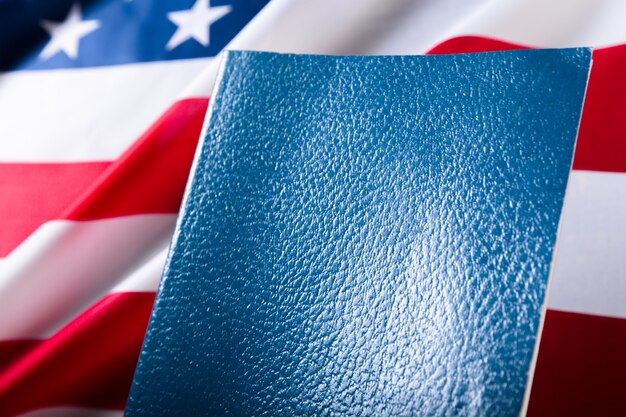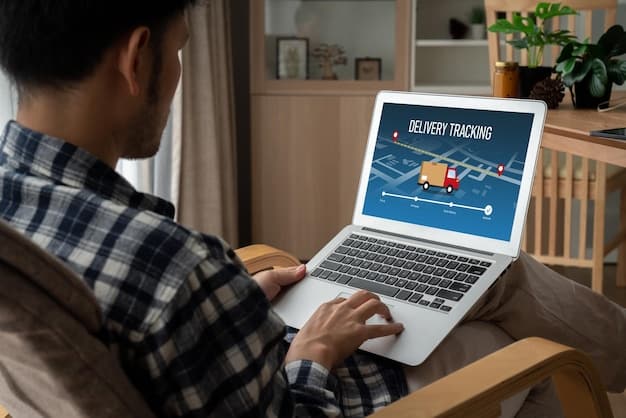US Import Licenses & Permits: Your 2025 Guide

Demystifying US Import Licenses and Permits for 2025 involves understanding which goods require these documents, the agencies that issue them, and the specific requirements for each. This guide provides a comprehensive overview to help importers navigate the complexities of US import regulations.
Navigating the complex world of importing goods into the United States requires a thorough understanding of various regulations, including the necessity of licenses and permits. This comprehensive guide, Demystifying US Import Licenses and Permits: A Comprehensive Guide for 2025, will provide you with the essential knowledge to ensure your import operations are compliant and efficient. Let’s dive in and simplify the process.
Understanding the Basics of US Import Licenses and Permits
Importing goods into the United States can seem daunting, but understanding the foundational aspects of licenses and permits is crucial. These documents are often required to ensure that imported goods comply with US laws and regulations, protecting both consumers and domestic industries. This section breaks down the fundamental concepts and why they are necessary.
What Are Import Licenses and Permits?
Import licenses and permits are official documents issued by US government agencies that authorize the import of specific goods. They verify that the goods meet certain standards and regulations.
Why Are They Necessary?
These licenses and permits are necessary for several reasons, including protecting public health, ensuring national security, and enforcing trade agreements. Non-compliance can lead to significant penalties.

Here are some key reasons why import licenses and permits are required:
- To safeguard public health and safety by ensuring that imported products meet safety standards.
- To protect the environment by regulating the import of items that could harm natural resources.
- To enforce trade agreements and prevent illegal trade activities.
In summary, understanding these basics is the first step in ensuring your import operations are smooth and compliant. Without proper licenses and permits, you risk facing hefty fines, delays, and even the seizure of your goods. Compliance is not just a recommendation, it’s a necessity.
Identifying Goods That Require Import Licenses
Not all imported goods require licenses or permits, but certain categories are heavily regulated. Identifying whether your goods fall into these categories is a critical step in the import process. This section provides a roadmap to help you determine if your products need special documentation.
Commonly Regulated Goods
Several types of goods commonly require import licenses or permits due to their potential impact on public health, safety, or national security.
Some of the most frequently regulated items include:
- Agricultural products (e.g., fruits, vegetables, meat)
- Firearms and ammunition
- Pharmaceuticals and medical devices
- Wildlife and certain animal products
Checking Specific Requirements
To precisely determine if your goods require a license, consult the regulations of the relevant US government agencies. The Harmonized Tariff Schedule (HTS) is also a valuable resource.

Consulting resources such as the Harmonized Tariff Schedule (HTS) and the CBP website will give you clarity on your import needs. Being thorough in this research is crucial to prevent issues down the line.
In conclusion, proactively identifying regulated goods is essential. Ignoring this step can lead to significant problems, including delays, fines, and legal repercussions. Always verify whether your products need a license or permit before attempting to import them.
Key US Agencies Issuing Import Licenses and Permits
Navigating the US import landscape requires knowing which agencies oversee specific types of goods. Different agencies have jurisdiction over different products, so identifying the correct one is vital. This section provides a guide to the primary agencies you’ll likely encounter.
US Customs and Border Protection (CBP)
CBP is the primary agency responsible for enforcing import laws and regulations at all US ports of entry. They also work with other agencies to ensure compliance.
US Department of Agriculture (USDA)
USDA regulates the import of agricultural products to prevent the introduction of pests and diseases that could harm US crops and livestock.
Food and Drug Administration (FDA)
FDA oversees the import of food, drugs, medical devices, and cosmetics to ensure they are safe and effective for consumers.
Knowing which agency to contact can save significant time and resources. Staying informed about their specific regulations will help you navigate the import process more effectively.
- US Fish and Wildlife Service (USFWS): Regulates the import of wildlife and related products.
- Bureau of Alcohol, Tobacco, Firearms and Explosives (ATF): Oversees the import of firearms, ammunition, and explosives.
In summary, understanding the roles of the various US agencies involved in import regulation is crucial for compliance. Ensuring you deal with the right agency from the start can streamline your import operations and prevent costly delays.
Step-by-Step Guide to Applying for US Import Licenses
Applying for import licenses can seem complex, but breaking the process down into manageable steps makes it more approachable. This section provides a practical, step-by-step guide to help you navigate the application process successfully.
Researching Requirements
The first step is to thoroughly research the specific requirements for your goods. Different products have different regulations, so understanding the specifics is essential.
Gathering Documentation
Next, gather all the necessary documentation required for your application. This might include product descriptions, manufacturing details, and compliance certifications.
Submitting Your Application
Submit your application to the appropriate agency. Ensure that all information is accurate and complete to avoid delays.
Here’s a simple outline of the general application process:
- Identify the correct agency that regulates your product.
- Review all requirements and gather necessary documentation.
- Complete the application form accurately and thoroughly.
- Submit the application and pay any required fees.
By following these steps carefully, you can increase your chances of a successful application and ensure your import operations proceed smoothly. Diligence and accuracy are key to avoiding complications and delays.
Common Challenges and How to Overcome Them
Despite careful planning, importers often face challenges in obtaining licenses and permits. Recognizing these common issues and knowing how to address them can save time and money. This section outlines frequent challenges and provides practical solutions.
Delays in Processing
One of the most common challenges is delays in processing applications. This can result from incomplete applications, high application volumes, or agency backlogs.
Inaccurate Information
Submitting inaccurate or incomplete information is another frequent issue. This can lead to rejection of your application or further delays as the agency seeks clarification.
Changing Regulations
Import regulations can change, and staying up-to-date is crucial. Failure to comply with updated rules can result in penalties and delays.
Here are solutions to mitigate common issues:
- Submit complete and accurate applications to avoid delays and rejections.
- Stay informed about regulatory changes by subscribing to updates from relevant agencies.
- Consult with import experts to clarify any uncertainties and ensure compliance.
In conclusion, proactive planning and staying informed are essential strategies for overcoming common challenges. Addressing potential issues before they arise can significantly streamline your import operations and ensure compliance.
Leveraging Technology for Efficient Import Compliance
In today’s digital age, technology plays a crucial role in streamlining import compliance. Leveraging the right tools and platforms can save time, reduce errors, and ensure adherence to regulations. This section explores how technology can enhance your import operations.
Using Software Solutions
Specialized software solutions can automate many aspects of import compliance, from document preparation to tracking shipments.
Staying Updated with Online Resources
Online resources, such as government websites and industry publications, provide valuable information on import regulations and best practices.
Electronic Filing Systems
Many agencies now offer electronic filing systems, allowing importers to submit applications and documents online.
Here are some ways technology can assist:
- Automated compliance checks to ensure all requirements are met.
- Real-time updates on regulatory changes.
- Centralized document management for easy access and organization.
By embracing technology, importers can significantly improve their compliance efforts and achieve greater efficiency. Staying current with digital tools and resources is a key component of successful import operations.
| Key Aspect | Brief Description |
|---|---|
| 📝 Licenses & Permits | Official docs authorizing the import of specific goods into the US. |
| 🏢 Key US Agencies | Includes CBP, USDA, FDA, each regulating specific types of imports. |
| ✅ Application Steps | Involves researching, gathering documents, and submitting accurate applications. |
| 💻 Tech Solutions | Software and online tools can streamline and automate compliance processes. |
Frequently Asked Questions (FAQ)
▼
The HTS is a system used by the US to classify imported goods. It helps in determining the applicable duty rates and whether a license or permit is required.
▼
Consult the CBP website or the HTS. You can also reach out to an import specialist for guidance on the specific requirements.
▼
Importing without the necessary licenses can lead to penalties, fines, delays, seizure of goods, and legal repercussions.
▼
Yes, you typically have the right to appeal a denied application. The specific procedure will depend on the agency involved and their appeals process.
▼
Import regulations can change periodically. It’s crucial to stay updated through agency websites, industry publications, and professional consultations.
Conclusion
Navigating the landscape of US import licenses and permits requires diligence, research, and a proactive approach. By understanding the basics, identifying regulated goods, engaging with the correct agencies, and leveraging technology, importers can ensure compliance and streamline their operations for success in 2025 and beyond.





